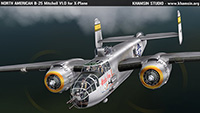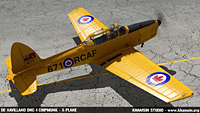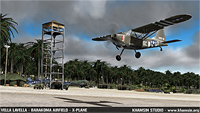History
Ask most anyone on the street to tell you the first plane that comes to his mind. In all likelihood, you'll hear old names like “Constellation”, or “Concorde”, or perhaps even B17 : in fact, you might find that the B17 is very likely one of the most famous aircraft ever, and definitely the most famous bomber of all time.
There are several very good reasons why this is so.
First of all, there were simply so many of them : consider that around 13,000 B17s were produced and saw action in WWII !
The second thing to consider? She saw action all around the world, in every theatre of combat operations, and on a scale that makes her unique in aviation history.
Last but by no means least, she was the deadiest Allied weapon the Axis powers faced during WWII, a weapon that had an ability to both inflict and absorb damages that, when looked-back on even today, it may easily be considered that the aircraft possessed some kind of magic, or other-worldly powers.
Oh, this last claim? Does this seem absurd to you? Well then, study the picture below :
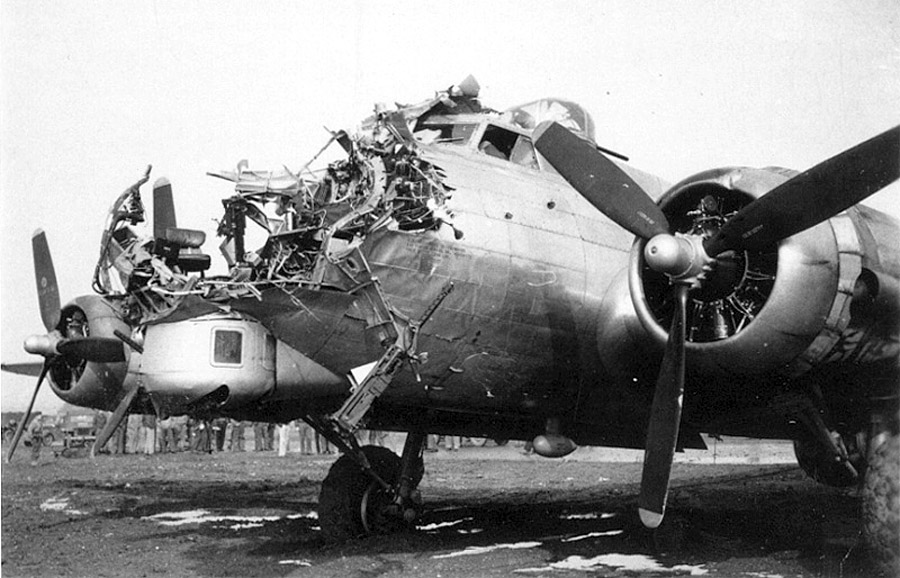
Believe it or not, this aircraft did a perfect (but obviously her very last) landing on October 15th, 1944, on Nuthamstead Airfield, after it suffered a direct 88mm-flak hit over Cologne.
The shell drilled inside the forward B/N compartment and exploded INSIDE the aircraft, immediately killing the bombardier, S/Sgt George ABBOT. The pilot, 1st Lt Lawrence DELANCEY, with no radio, no intercom, no oxygen, no hydraulics, two engines destroyed, and an almost totally destroyed windshield, nevertheless piloted his stricken bird back to a safe airfield. This plane, the « Lovely Julie », is really emblematic of what the B17 was all about : an aircrew’s best ticket for return-trip travel. She was able to make it home with unbelievably large (and vital) parts missing from the aircraft, trivial parts such as entire tail structures, large chunks of wing shot away, huge segments of the fuselage torn asunder, and while limping back to base on three engines was a commonplace occurrence, the aircraft could and did return to base safely on only two, and in several cases, on only a single engine!
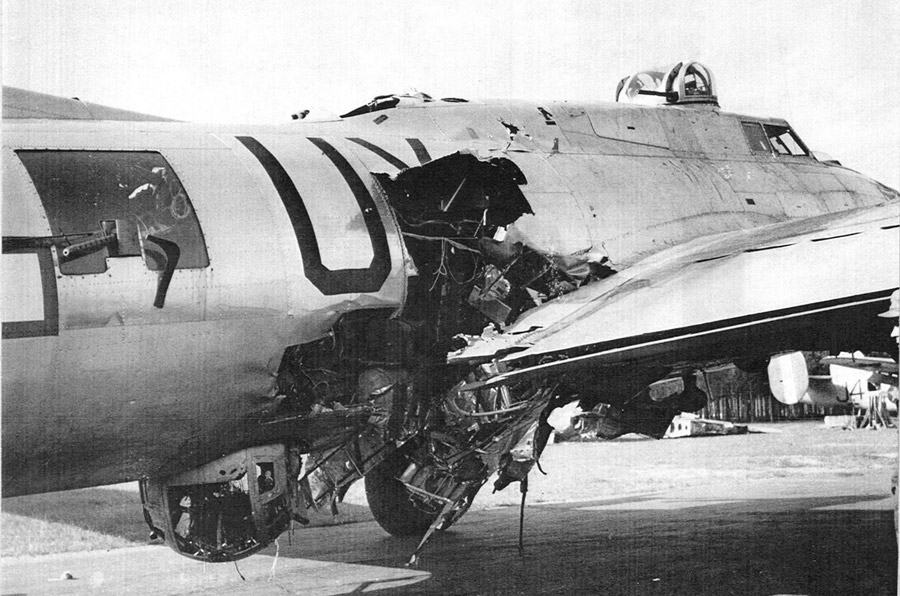
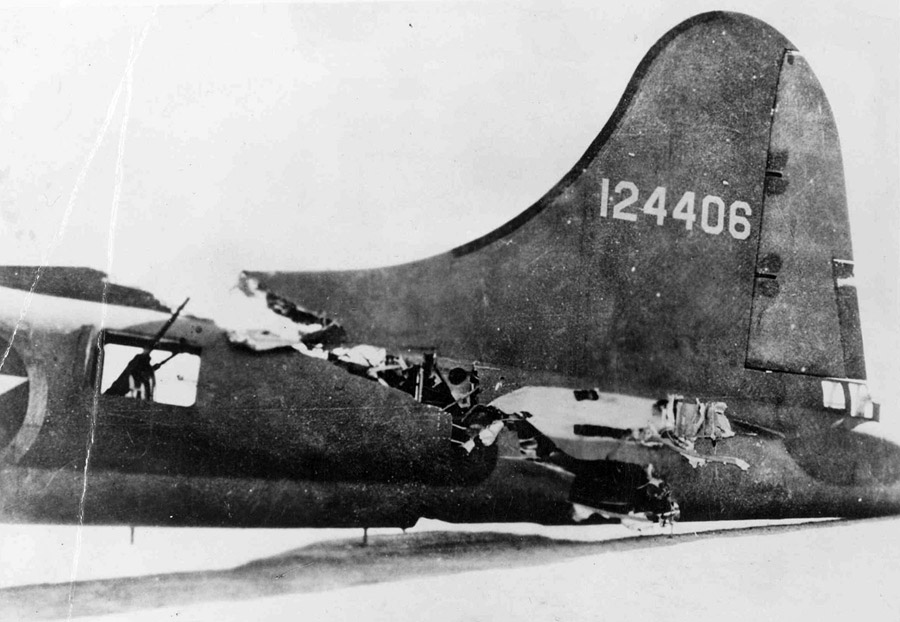
The Real B17 Story began in July 1935 with the first flight of the prototype Model 299 ; this was quickly followed by a pre-serial version, the YB17, that would fly in late 1936. When the model is equipped with super-chargers in 1939, the YB17 finally becomes the B17. The supercharger made the B17 mission worthy by making her capable of reaching very high altitudes. New versions quickly followed, B, C, D, E, F and finally G, each increasing the capabilities and reliability of the aircraft. Consider this : the initial YB17 had six machine guns and 4x 750hp engines; in the end, the B17G had 13 machine guns and 4x 1200hp engines. Roughly speaking, one late model B17G had the strength and capabilities of two earlier B17A models!
The B17s first encounter with Axis fighters occured in the early 1943. Four Bf109 pounced on an isolated B17E struggling to return to base, turning her into a sieve and with one engine a flaming wreck. In return for their efforts, all four fighters were shot down and the Boeing... well, that B17E made it home. A short time later, an FW190 crippled a B17F during an intense dogfight and finally collided with her ; in the collision the FW’s wing sliced right through the B17's tail. Look at the image above if you don’t believe it ! That’s her ! She made it home, too... By this time the B17 was entering the the land of superstition and legend, with an aura of magic and good luck surrounding her. But before you think the story ends there consider that more than 5000 B17s were destroyed during the War, and each with a crew of ten men.
Below, the first Model 299 (and she'll crash under unclear circumstances in late 1935)
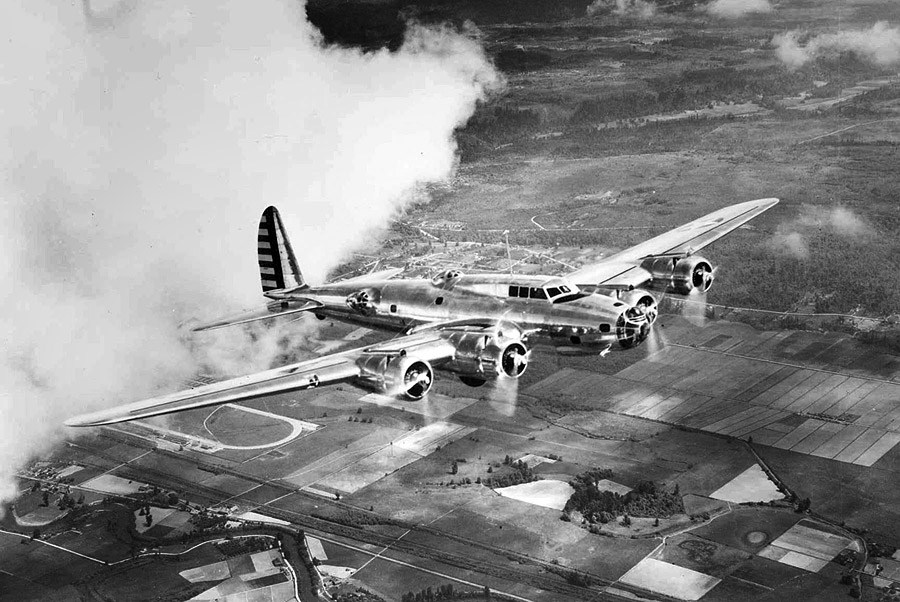
Below, a B17D, (1940), whose vertical stabilizer (inherited from the 299) makes her very easy to identify.
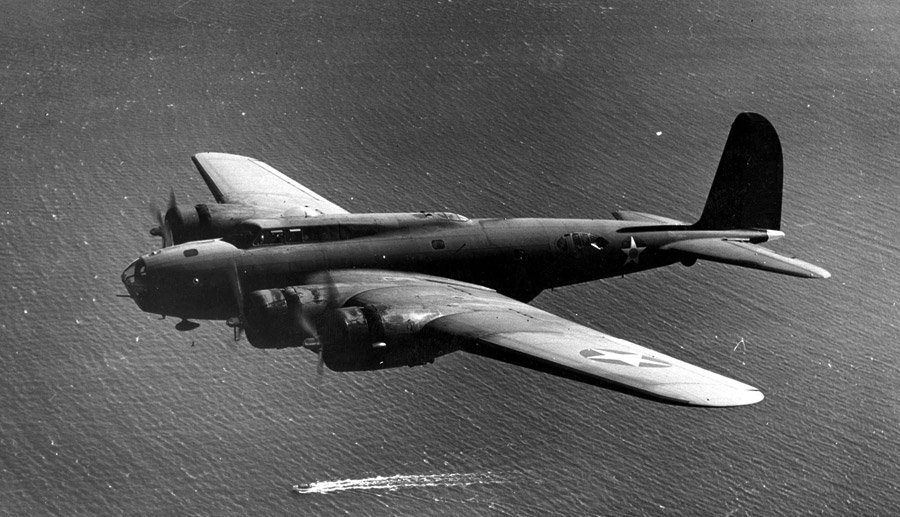
When the E Model variant was introduced, production was spread between Boeing, Douglas and Lockheed, and simply because after WWII broke out the US Army Air Corp needed a huge number of aircraft to service both in the European and Pacific Theaters of Operations. But consider this: by the end of 1942, she was already the “most produced” four engined aircraft in history with, by that time, more that 5000 aircraft produced!
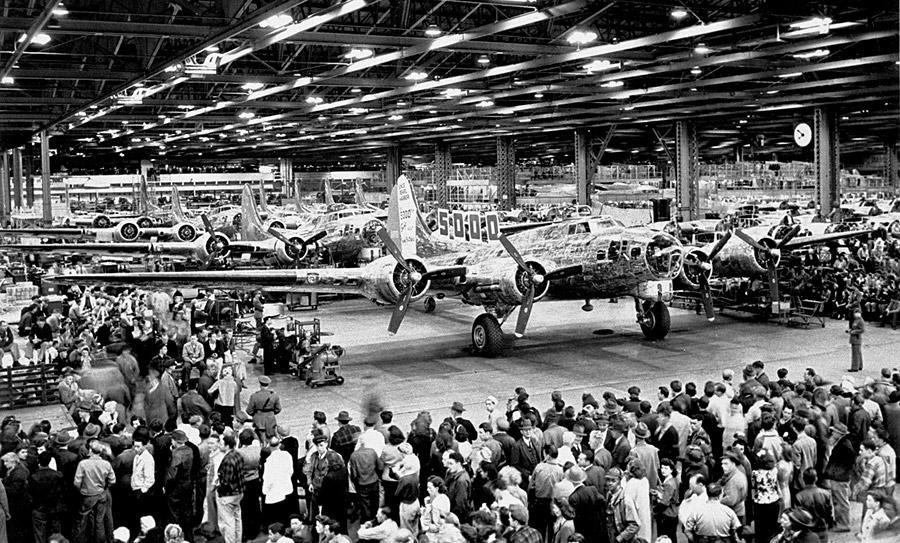
Finally, the B17G model was introduced at the end of 1943, and this would become be the most heavily produced of all variants with more than 5000 planes accounted for – and for the G model alone – out of the 13000 B17s, of all variants produced, during the war...
She saw, in all, 25 years of service on all continents, doing all kind of missions, from bombing (of course) to meteorological observation and even "sea search & rescue", an inflatable boat being loaded in the bomb stack ! You can see a former CIA-owned and operated B17 at the end of the James Bond movie Thunderball performing in that role, too! The last aircraft officially retired from service in 1959... and while this makes a loooooong story we hope you’ll appeciate the history of this remarkable aircraft just a little more as a result!
Crédits :
- http://www.taphilo.com/history/WWII/USAAF/Boeing/B17/B-17-5-grand-H303-02.jpg
- http://www.b17.org/images/timephoto07.jpg
- http://jacqueline-devereaux.blogspot.com/2010/04/bombardiers-lourds-des-us-army-air.html
- http://ardennesavions45.blogspot.com/http://ardennesavions45.blogspot.com/
www.khamsin.org - 2014


